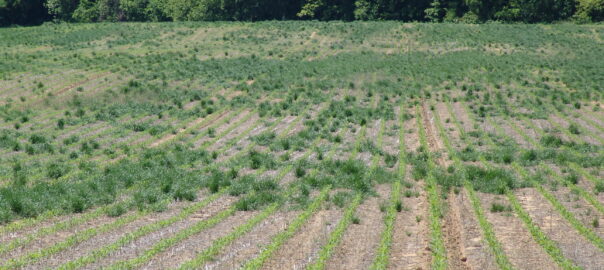As of May 9th, corn producers were reported to be about 75% planted which is actually on track with Tennessee’s 5-year average for corn planting progress. Continue reading
Recent Updates
Points for Grain Conference Videos Available Through May 31
As we wait out this latest round of wet weather, just wanted to remind those who have not had the opportunity to view our grain conference videos for continuing education credits, that points will be available for just a few more weeks. Continue reading
Using the Thrips Infestation Predictor for Cotton
A reminder the Thrips Infestation Predictor for Cotton described in the article below, published last year, is still available for use. However, the link has changed to https://products.climate.ncsu.edu/ag/cottontip/.
———————————————————————-
The Thrips Infestation Predictor for Cotton is a useful tool for predicting whether a foliar insecticide application is needed for thrips control in cotton. It uses local weather data in association with a user defined planting date to estimate the size of the local thrips population, the susceptibility of seedling plants, and thus, the risk of thrips injury. The model is for tobacco thrips, by far the most common species infesting cotton in Tennessee. Continue reading
Ryegrass an Fescue Management in Emerged Corn
The call of the week is how to control ryegrass and, in a few other cases, fine fescue in emerged corn (Video of ryegrass and fescue in corn). Several have reported these grasses recovering from glyphosate + dicamba or in a few instances, glyphosate + rimsulfuron burndown. The questions that follow are why did they recover and what is the best way to control them now that the corn is up? Continue reading
UT Cotton Scout School (Friday, May 28, 2021)
The UT Cotton Scout School is scheduled for the last Friday of the month, May 28st, at the West Tennessee Research and Education Center (605 Airways Blvd, Jackson). There is no fee, and preregistration is not required. Registration begins at 8:00 AM with the program starting at 8:30. Content will include classroom and hands-on training with an optional ‘go-to-the-field session’ after a box lunch. Topics covered will include cotton development and identification and symptoms of insect pests, plant diseases, and weeds.
Wheat Disease Update – Stripe Rust, Bacterial Leaf Streak, and Head Scab Risk
To date there have been additional reports of stripe rust in West TN and some fields with bacterial leaf streak. As wheat starts to bloom, continue to monitor the Fusarium Head Blight(FHB)/Head Scab model to assess if fungicide application is needed. Continue reading

Ryegrass Management in Corn
Ryegrass appears to have escaped burndown in a number of fields that have been planted to corn. In most cases the ryegrass escaped a glyphosate plus dicamba burndown. Continue reading
Tennessee State Rule that Prohibits use of Older Dicamba Formulations is Fast Approaching
A deadline that is quickly approaching in Tennessee is the state rule that prohibits the use of older generic formulations of dicamba in soybean or cotton from May 15 to October 1. Continue reading

